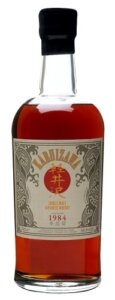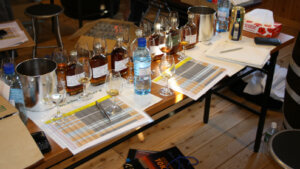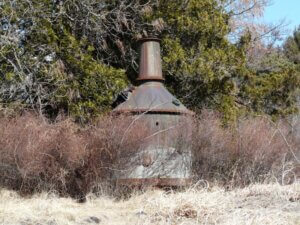When is Karuizawa not Karuizawa? When it’s Karuizawa

‘Resurrected’ , ‘revived’, ‘doors to reopen’. The excited headlines said it all. The return of Karuizawa from beyond the grave. Just when you thought it was all over, like Brora, Port Ellen, and Rosebank, the lights are being turned back on and production restarting. The band’s back together!
‘Karuizawa is getting resurrected in 2023 as its new distillery begins production again,’ wrote the Robb Report. Not true. ‘This shuttered distillery’s Japanese whisky became a cult hit. Now it’s making a comeback,’ it continued. The first sentence is correct. The second isn’t.
‘Fine Japanese whisky retailer Dekanter (sic) has teamed up with Karuizawa Whisky Company to revive the revered single malt whisky…’ said Drinks Business. Untrue.
‘Legendary Japanese distillery to reopen its doors after shutting down in 2011,’ added the Whisky Raiders website breathlessly. Again …
If you read the press release from online retailer/bottler Dekantā (which is partnering with the owners of the new distillery in ‘a combination of official distillery bottlings and independent releases’), what had actually happened was that a new firm was opening a new distillery in the town of Karuizawa.
The new distillery will be called Karuizawa, and its whisky will also be labelled as such. Nothing has been resurrected, or revived, or reopened.
But why let the truth get in the way of the story?
The issue isn’t the opening of a new distillery in Karuizawa – after all Komoro is already up and running there. It lies in the name, and the easy way that this fact can be blurred so that people are led to believe that this is the old place reopening,
The use of the same name for the new distillery and whisky is trading on the goodwill and reputation of the old, demolished, distillery. You have to wonder whether the name’s potency will also influence the pricing structure.
Production, it says, will be small, with only 250 casks filled a year. As the new make is destined for ageing in ex-sherry casks, you’d expect that to mean butts, in which case production will be 87,000 lpa. This will also influence pricing.
In addition, the fact that terms such as ‘precious liquid’ are already being bandied about, suggests that cask sales will take into account the wildly over-inflated prices of the old stock in the secondary market. In other words, the reputation of the old will dictate the price of the (as yet unproven) new.
True, it will be precious, true it will come from Karuizawa, but it is not going to be the same precious Karuizawa liquid that the secondary market so loves.

All of this revolves around the slightly bizarre way that a forgotten Japanese distillery somehow became the country’s equivalent of cult single malt Scotch. It’s this which has prompted the building of the distillery. This which has given the name, and has caused the hysterical news reports.
The original Karuizawa’s elevation to cult status is one which defines the way in which whisky has moved from drink to investment in the past decade. This is also a story which is now being mangled.
According to the Dekantā release, when the distillery finally closed, the remaining stock was sold ‘to private investors’. Again, this isn’t true. The stock was sold to Number One Drinks Ltd., an established whisky distributor, importer, and agent for a number of brands. Number One Drinks Ltd. bottled and sold some of the stock under its own name, both as single casks, as well as a vatting which was sold under the Asama label.
The firm also sold a selection of casks to three other retailer/distributors: La Maison du Whisky (France), The Whisky Exchange/Speciality Drinks (UK), and Magny Inernational (Taiwan). All of these were also bottled and sold on the open market.

The aim was always to try and make this finite amount of whisky available to as many people as possible, rather than making it the plaything of investors and speculators. The prices of those early releases is proof of that. They made a whisky, which was pretty much unknown in Japan, internationally available.
It was only when bottles began to appear on the secondary market that the, frankly ridiculous, Karuizawa fever started. That finite nature turned what was an interesting single malt into an asset which could be traded. It is this boom which the new distillery is trying to tap into. The magic of the name rubbing off on to something new and different.
The plans are for the whisky to be aged for a decade before release – though if you have bought a cask presumably you could sell it before. In 10 years time how many people will remember the true story?

There is also a difference between this and the revival of Brora, Port Ellen, and Rosebank. All of these are the original distilleries, which in the first two cases have remained within their owner’s estate. Ian MacLeod didn’t just buy the Rosebank site, but all the remaining stock, and trademark. Although it is now owned by a different company there is transparency when it comes to ownership. There is no confusion.
With the new Karuizawa, I’d argue, confusion exists from the start. Whether intentional or not, new Karuizawa’s reputation will be driven by time-mangled memory and false history. Names matter, and so does truthful reporting.